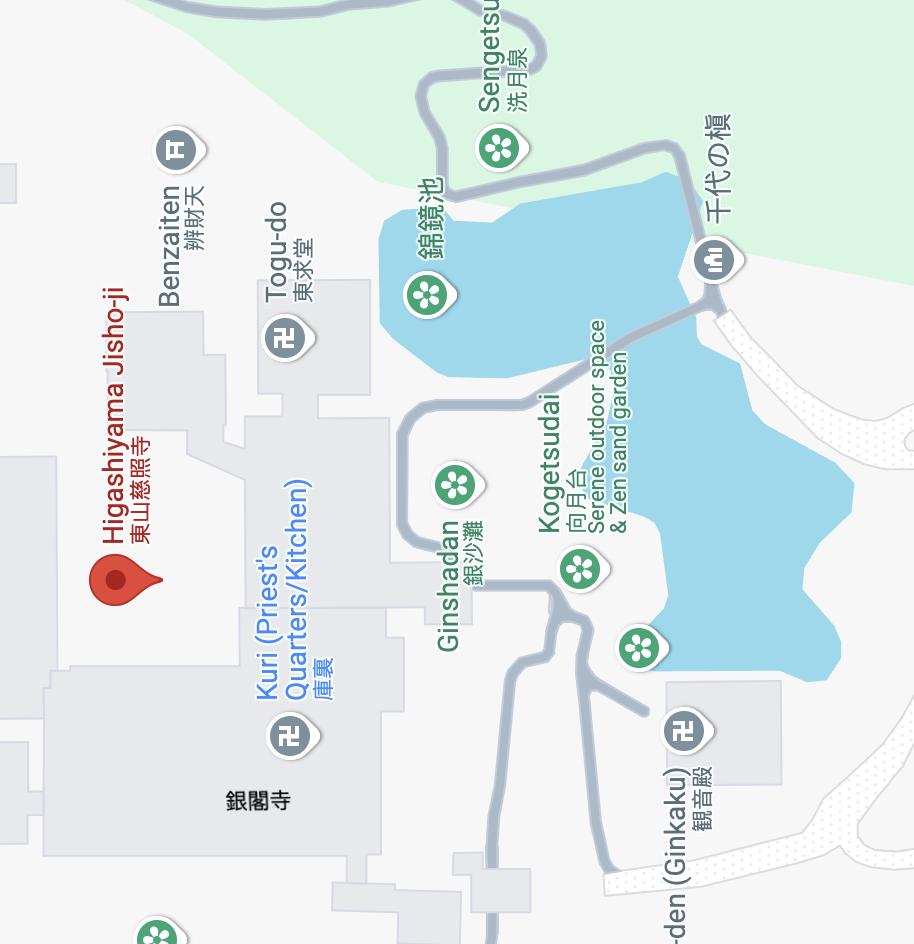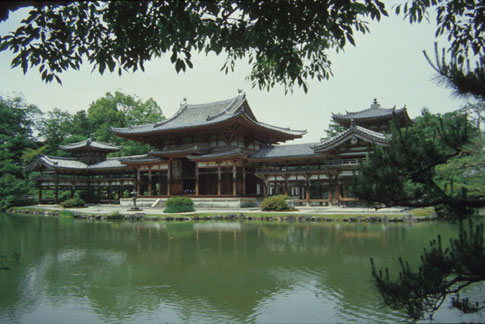
The temple of Jisho-ji is more popularly known as Ginkaku-ji, the Silver Pavilion. Both the pavilion and the garden were part of the retirement villa of Ashikaga Yoshimasa, the eighth Shogun of the Muromachi Period, who began construction in 1482. The complex became the very center of Japanese aesthetic concerns during the eight years of Yoshimasa's residency, particularly in the areas of art collecting, flower arranging, and the tea ceremony. Indeed, the location of the villa on the lower slope of the foothills bordering Kyoto on the east gave its name - Higashiyama or Eastern Mountains - to the Zen-inspired culture of the late fifteenth century. The pond garden is based loosely on that of Saiho-ji, a garden which Yoshimasa passionately admired and often visited. Choose a view point from the map or click Tour the Garden for more views of this garden.
The temple of Jisho-ji is more popularly known as Ginkaku-ji, the Silver Pavilion. The name derives from the theory that its most famous building was intended to be sheathed in silver leaf in imitation of the golden pavilion of Kinkaku-ji. Whether this was ever the intention is still a question, and if the plan existed, there is no evidence that it was ever carried out. The pavilion and garden are part of the retirement villa of Ashikaga Yoshimasa, the eighth Shogun of the Muromachi Period, who began construction in 1482 (the site was originally that of a Tendai Buddhist temple dating back to the Heian Period). The complex became the very center of Japanese aesthetic concerns during the eight years of Yoshimasa's residency, particularly in the areas of art collecting, flower arranging, and the tea ceremony. Indeed, the location of the villa on the lower slope of the foothills bordering Kyoto on the east gave its name--higashiyama or "Eastern Mountains"--to the Zen-inspired culture of the late fifteenth century (Yoshimasa's villa was known as the "Eastern Mountain Mansion": higashiyamadono). After Yoshimasa's death, and according to his will, the villa was converted to a Rinzai Zen temple in 1490. Of the original twelve buildings only two remain: the pavilion itself and the togudo with its early tea room. Both buildings face one of Japan's most famous pond gardens, the design of which is based loosely on that of Saiho-ji, a garden which Yoshimasa passionately admired and often visited. The Silver Pavilion was also inspired by Saiho-ji, repeating the two-storied structure--the ruri-den--erected by Muso on the north shore of the Saiho-ji pond. Like Saiho-ji, Ginkaku-ji also has an upper dry garden located along the slope of the ridge to the south of the complex.

